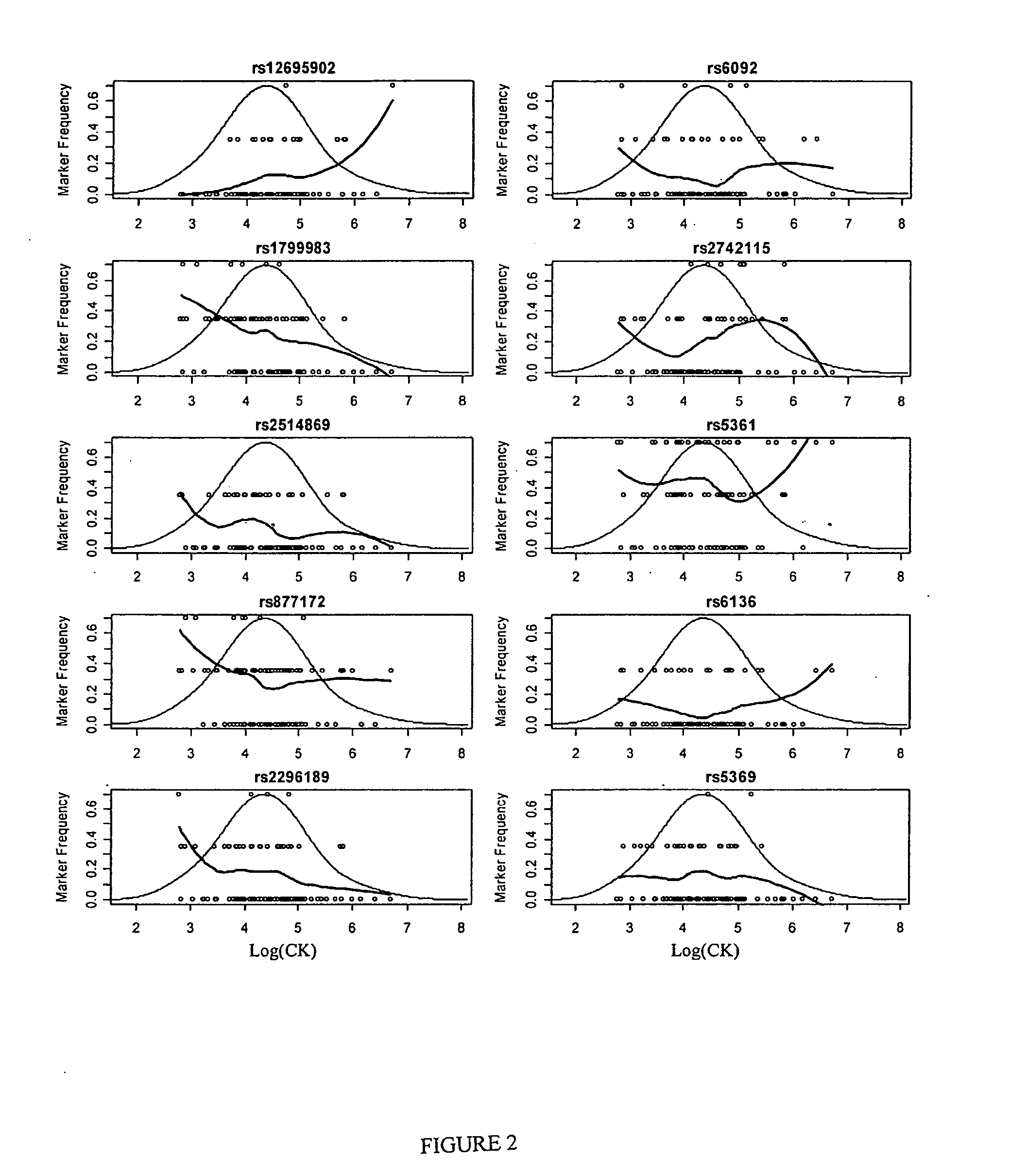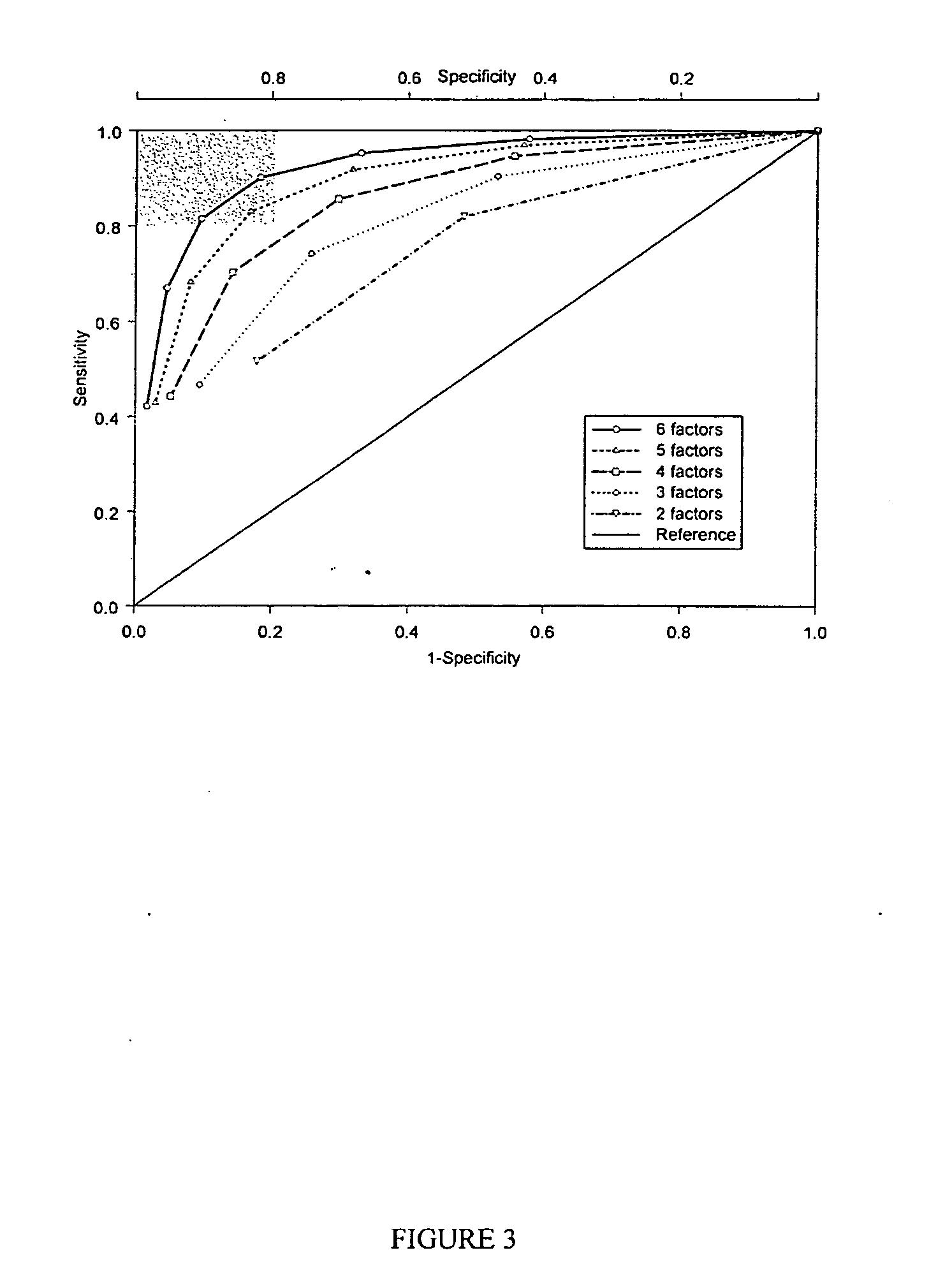Physiogenomic method for predicting statin injury to muscle and muscle side effects
- Summary
- Abstract
- Description
- Claims
- Application Information
AI Technical Summary
Benefits of technology
Problems solved by technology
Method used
Image
Examples
example 1
Physiogenomic Analysis Links Serum CK Activities During Statin Therapy to Vascular Smooth Muscle Homeostasis
[0046] Statins are extremely well tolerated by the majority of patients, but can produce a variety of muscular complaints ranging from mild myalgia to frank rhabdomyolysis. (Thompson et al 2003). Serum creatine kinase (CK) levels are used clinically to assess the degree of muscle injury, although myalgia and skeletal muscle weakness can occur in patients with no or little CK elevation. In the clinically rare condition of rhabdomyolysis the relationship between statin-induced muscle injury, extremely elevated CK and clinical severity is well established (Staffa et al 2002).
[0047] Various mechanistic hypotheses have been posited to explain statin-induced muscle injury (Rosenson 2004). These hypothesis range from pharmacodynamics, e.g. interference with energy transduction process by statin interactions with HMG-CoA reductase homologue proteins, to pharmacokinetics, e.g. variab...
example 2
[0069] PHYSIOGENOMICS ARRAY A gene array covering 384 SNPs corresponding to 214 genes related to six major physiological axes: cardiovascular function, inflammation, neurobiology, metabolism, lipid biochemistry, and cell growth was developed. The following pathways were represented: insulin resistance, glucose metabolism, energy homeostasis, adiposity, apolipoproteins and receptors, fatty acid and cholesterol metabolism, lipases, receptors, cell signaling and transcriptional regulation, growth factors, drug metabolism, blood pressure, vascular signaling, endothelial dysfunction, coagulation and fibrinolysis, vascular inflammation, cytokines, neurotransmitter axes (serotonin, dopamine: cholinergic, histamine, glutamate) and behavior (satiety). The array has been used successfully on approximately 1000 samples from different clinical studies. The array was assembled using the methods described herein and genotyping on the array was performed on 96 samples each using the Illumina BeadA...
example 3
Selection of Gene Markers for SIM Gene Array
[0074] Several theories exist on the general blockage of cholesterol synthesis, the reduction in local ubiquinone levels or the interference with signaling cascades leading to apoptosis. A multitude of candidate genes exists from the known action of statins on lipid metabolism and skeletal muscle physiology and can form the basis for a specialized gene array for statin injury to muscle (SIM) and muscle side effects.
[0075] In the selection of candidate genes representatives of various physiological pathways and networks is utilized (table 7). The genes included represent the primary therapeutic targets of statins and their pharmacological pathways, the known and potential downstream targets of statins as part of the cholesterol and lipid metabolism pathways, and the known and hypothesized genetic risk factors for the development of myopathies. Although the list of genes most likely misses some known key genes and lacks as of yet undiscove...
PUM
| Property | Measurement | Unit |
|---|---|---|
| Fraction | aaaaa | aaaaa |
| Fraction | aaaaa | aaaaa |
| Fraction | aaaaa | aaaaa |
Abstract
Description
Claims
Application Information
 Login to View More
Login to View More - R&D
- Intellectual Property
- Life Sciences
- Materials
- Tech Scout
- Unparalleled Data Quality
- Higher Quality Content
- 60% Fewer Hallucinations
Browse by: Latest US Patents, China's latest patents, Technical Efficacy Thesaurus, Application Domain, Technology Topic, Popular Technical Reports.
© 2025 PatSnap. All rights reserved.Legal|Privacy policy|Modern Slavery Act Transparency Statement|Sitemap|About US| Contact US: help@patsnap.com



